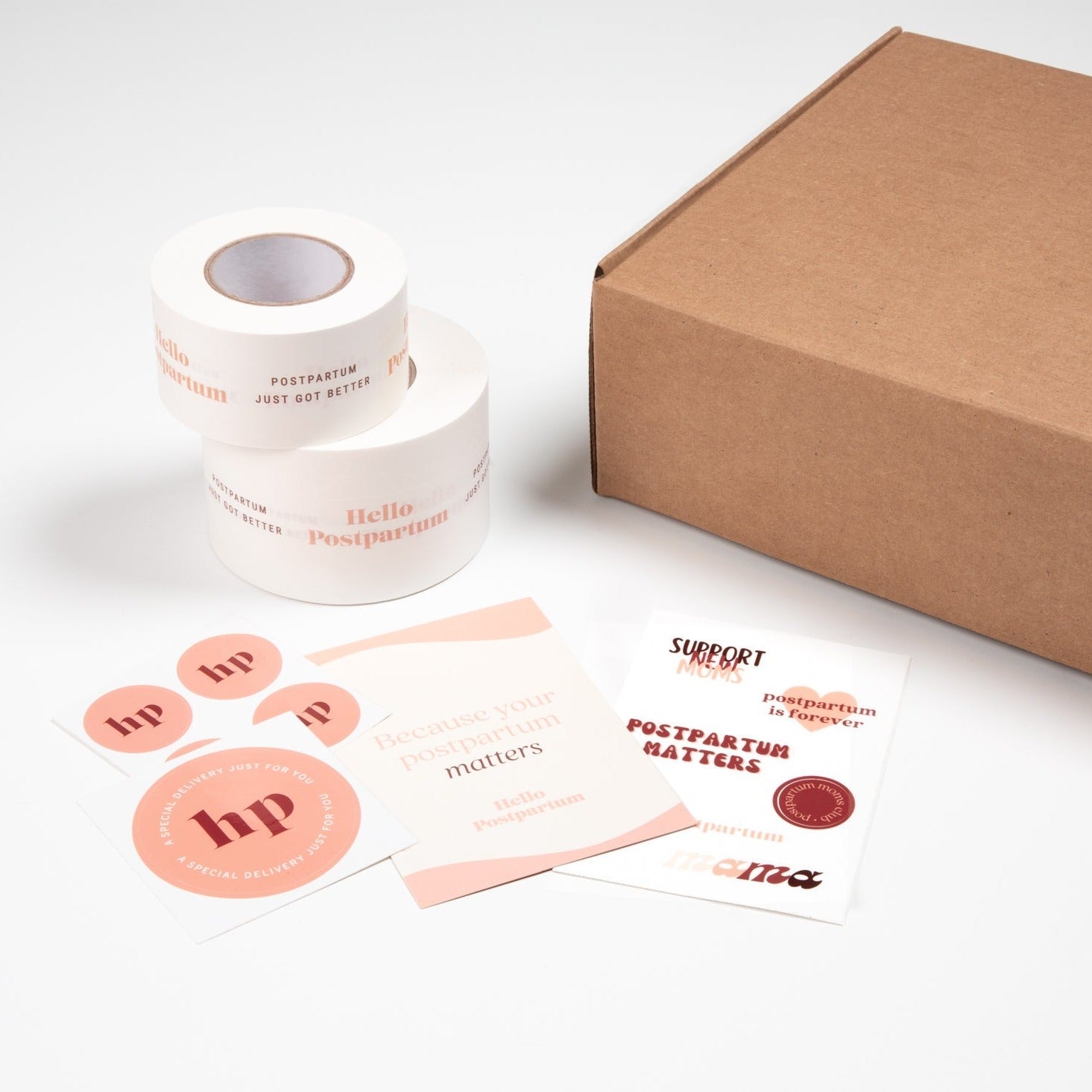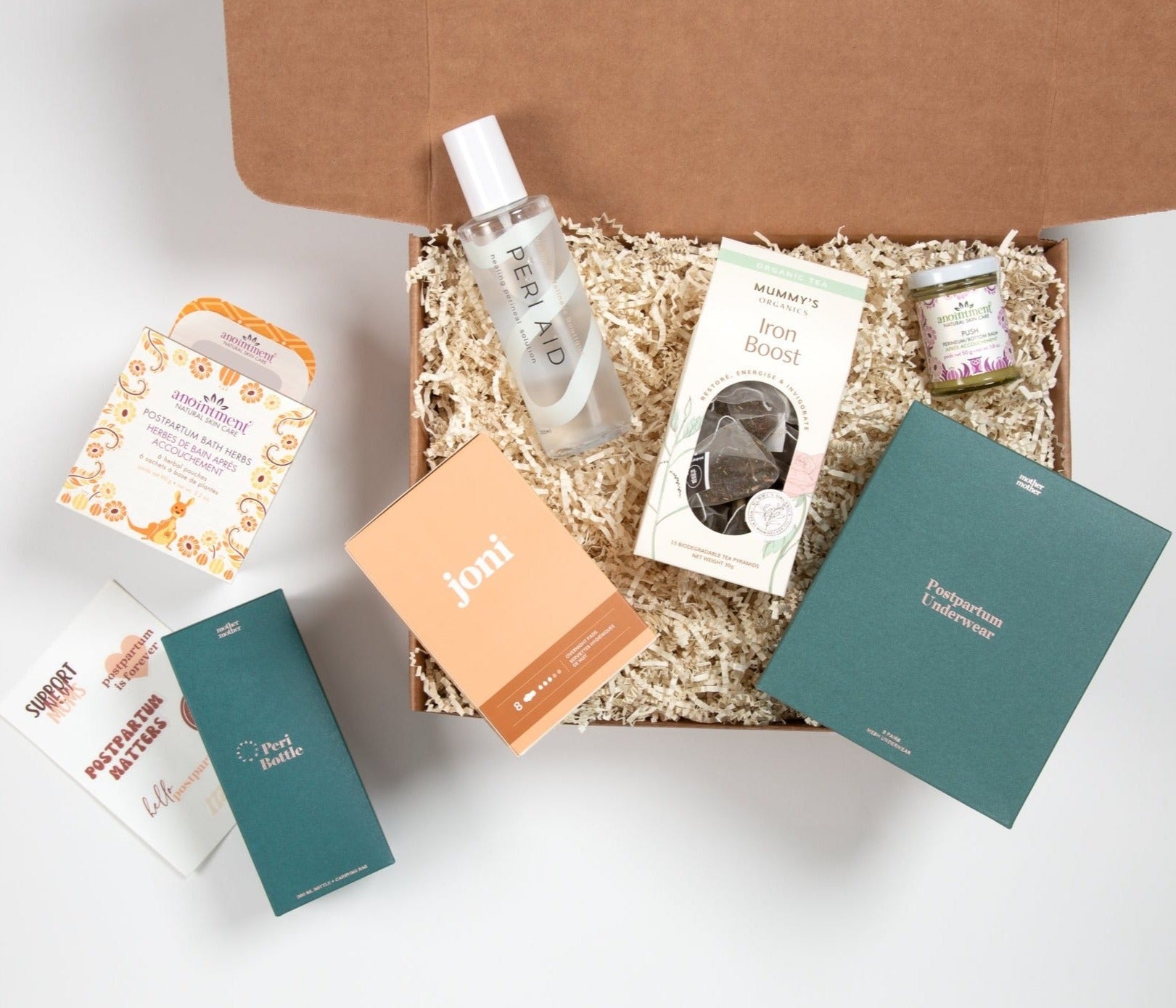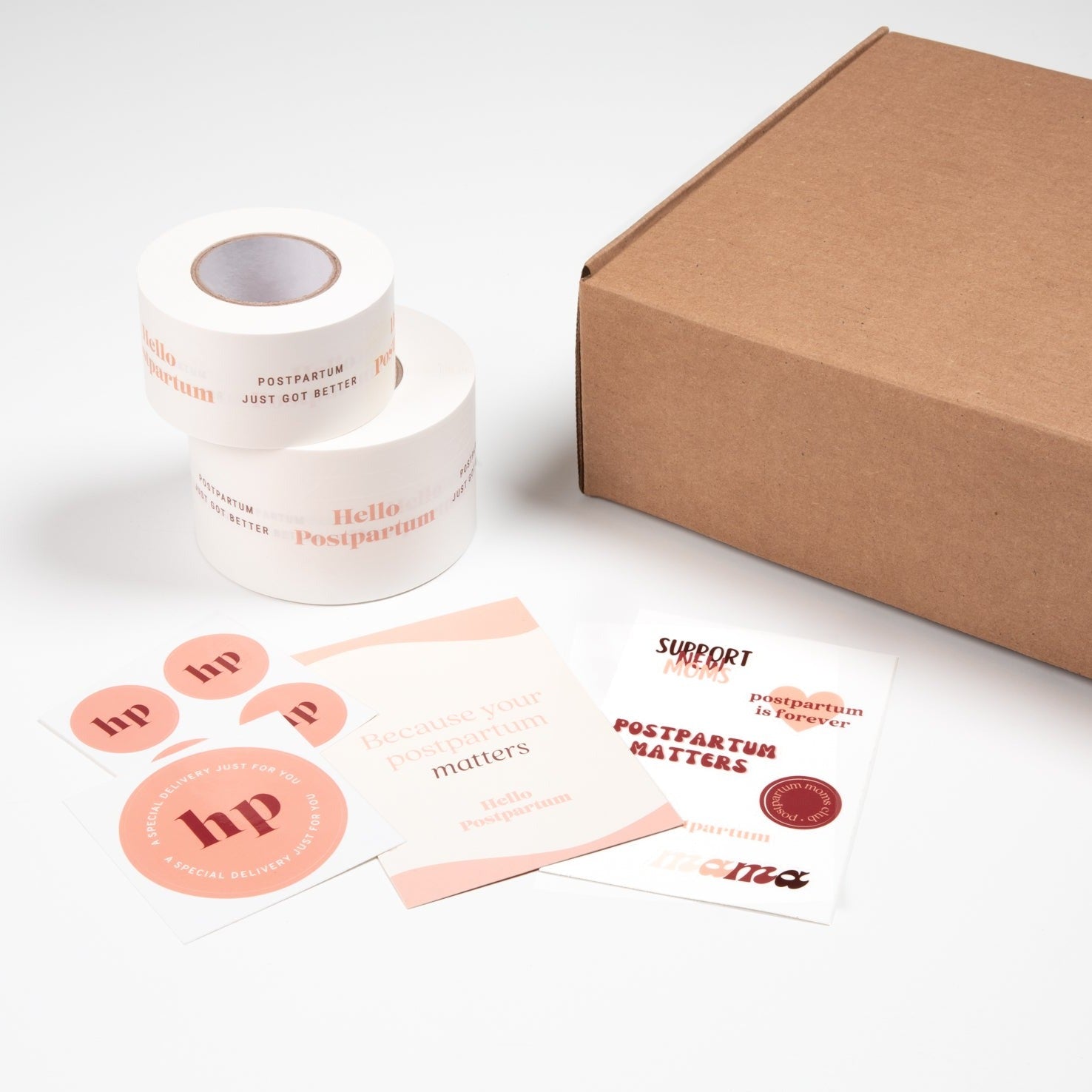

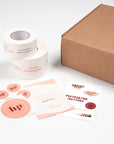
Postpartum Recovery Kit
As seen on Parents.com. From tearing to swelling to hemorrhoids and more, there are some essential tools required to feel prepared and cared for after birth. This kit has it all (and then some).
Pairs well with our Week-by-Week Recovery Guide.
Please note: some items may vary slightly based on availability.
Inside our Postpartum Recovery Kit you'll find:
• 'Peri Aid' witch hazel spray
• Reusable mesh undies (5)
• Organic overnight pads (8)
• Single-use sitz bath blend sachets (6)
• Organic iron-boosting tea
• BPA-free peri bottle
• 'Rhoid & Bottom balm
• Hello Postpartum Sticker sheet
All ready-to-gift boxes are wrapped with care using our signature crinkle paper, branded stickers, and more.
We ship all US orders through USPS. At checkout, you can select Ground (free with orders $125+), Priority, or Priority Express. Once your order has shipped, you'll automatically receive tracking information.
We use DHL or USPS for international orders based on the best available rate (unless otherwise specified). Customer is responsible for any incurred VAT, import, or duty fees.
We accept returns for store credit for items that are unopened, unused, and in their original condition within 30 days of purchase.
Targeted care, all in one box
Birth recovery essentials
Whether for yourself or someone else, get the gift of ultimate support with our postpartum recovery box. This thoughtfully curated collection includes everything needed to make vaginal birth recovery easier. Need a C-section box? Check out ours here.
HERE'S WHAT YOU'LL GET
What's inside the box?
Inside our Postpartum Recovery Box you'll find:
• 'Peri Aid' witch hazel spray
• Reusable mesh undie set (5)
• Organic overnight pads (8)
• Single-use sitz bath blend sachets (6)
• Organic iron-boosting tea
• BPA-free peri bottle
• 'Rhoid & Bottom balm
• Hello Postpartum Sticker sheet
Plus, when you shop our ready-to-ship boxes, you'll save money than buying all items individually.

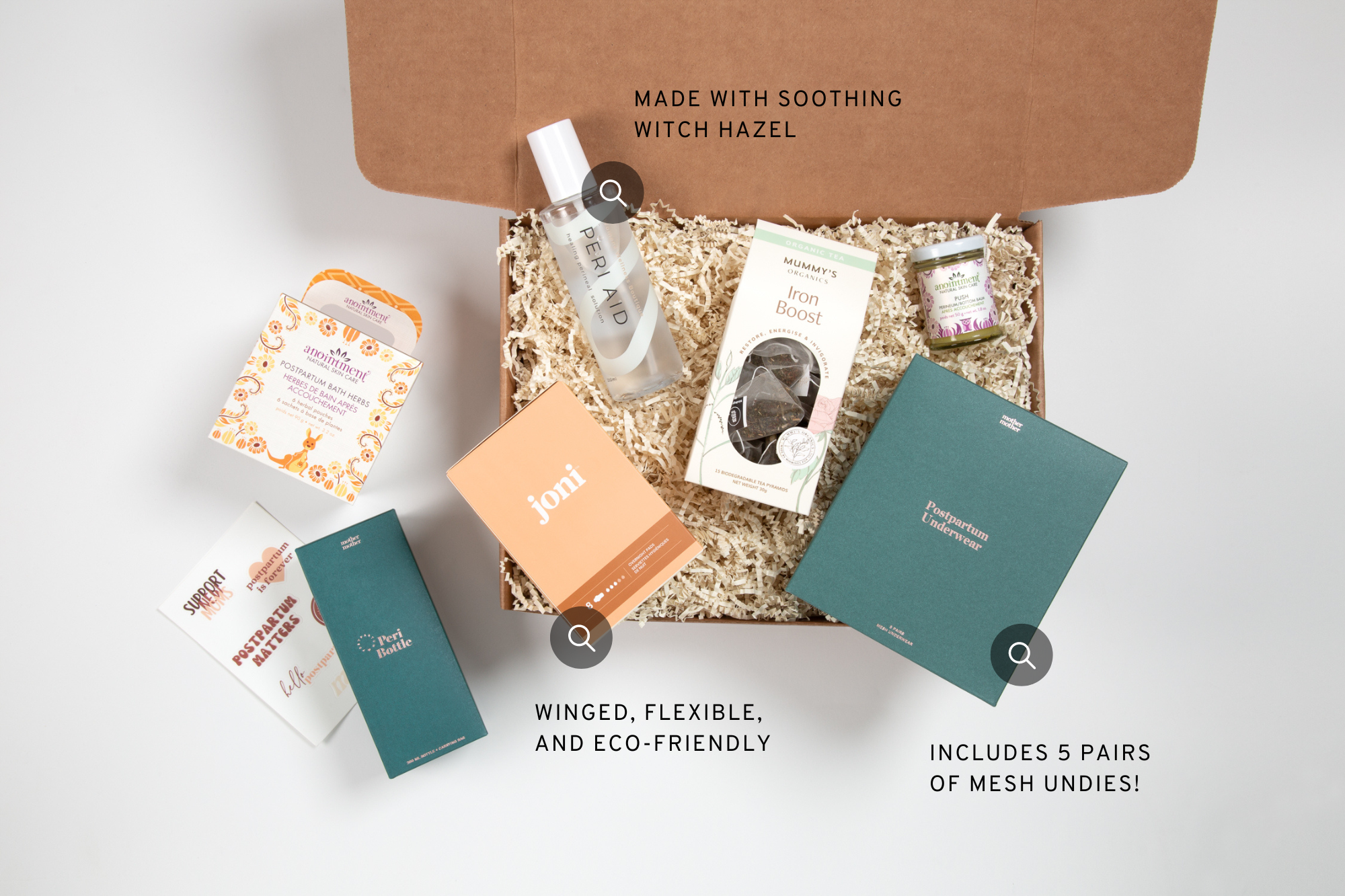
Product spotlight
Okay, tell me more...
Want to know a little more about what's inside?
• The Mesh Undies Set (5) can be rewashed and gently re-used. They're stretchy enough to be one-size-fits-all, and high-waisted enough to clear incisions.
• The Peri Aid is made from soothing witch hazel in an easy-to-use spray bottle.
• From Canada, the Sitz Blath Blend Satchets are made with sea salt, calendula, oats, and more.
• The Upside-Down Peri Bottle features an ergonomic sprayer for getting those hard-to-reach places clean.
• Made by a Midwife, the Iron-Boosting Tea is made with organic nettles and rose to naturally support iron levels.
Supporting small businesses
What makes our boxes different
Everything we carry is sourced from small businesses worldwide, and most aren't available on Amazon.
Also, we pride ourselves on partnering with companies who prioritize high-quality ingredients and materials over mass production. We know that quality matters, especially when a new mom is on the receiving end.
Plus, everything is wrapped with care using recyclable, compostable materials and finished with our branded tissue paper and signature crinkle.
